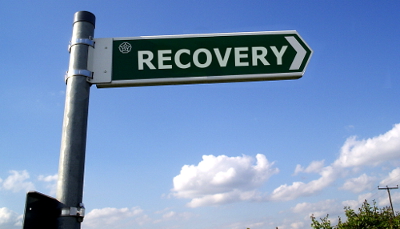
By Thomas W. Mesaros, CFRE, Senior Counsel, The Alford Group
In a recent edition of USA Today the cover story stated “U.S. Economy Gains Steam.” My first thought was yes, we all know that we are doing better. During March 2009 the Dow Jones Industrial Average hit a low of 6500 and, as I write, it is just over 17,000. During the last five and a half years, a lot of people made a lot of money; the current unemployment rate is around 6.1% (in King County, where Seattle is located, the unemployment rate is under 5% and elsewhere around the country there are pockets of significantly lower rates). The economy keeps growing – the second quarter of this year logged a 4% growth rate after a disappointing first quarter due primarily to the severe winter weather around the country. Even housing is making a comeback with fewer and fewer households “underwater” on their mortgages.
The outlook for the future continues to be bright. Mark Zandi, chief economist for Moody’s Analytics, expects the economy to grow 3.2% to finish 2014 and to increase in 2015 at a 3.7% growth rate. This is up from a 2.2% average growth rate over the past five years since the Great Recession began. There is caution by some economists due to the underperformance of European economies and the continued threat of political instability around the globe. Even with these uncertainties, the stock market has continued to grow and set new records on a regular basis.
However, campaign donors continue to be cautious, especially donors who are contributing seven-figure gifts. In several campaigns, in which our firm is providing guidance, donors are refraining from making multiple-year pledge commitments. In one case, a donor agreed to a million dollar gift after an “ask” of $5 million over five years. This donor acknowledged a desire to make the five year pledge but only gave the $1 million indicating that the organization should come back in a year and he would consider further support at that time. They did, and a second million was contributed with the same instructions – come back in a year and a third installment will be considered.
You can see the dilemma this is presenting to this organization. There are several:
- The organization would like to proceed with the project the campaign is funding based on pledge commitments but there are now several donors who have taken this path and several significant pledges are just not there. Though there are indications that these donors will give more in the years to come.
- To attract several other leadership donors, the organization would like to be able to declare the non-existent pledge commitments, but how can they when they do not exist?
These two issues create longer campaigns and delays in fulfilling the case for support – thus delays in meeting community need.
What can you do to move a campaign forward when donors say they are supportive at a limited commitment, but will make a significant longer term pledge? Here are a few steps to consider so you can address these issues with a “cautious” donor and with other donors as well:
- Focus on the case, not on your organization. Inspire the donor with the message that a pledge commitment will enable your organization to fulfill the case sooner than later. If this does not change the donors approach to their giving, thank them for their support, stay in contact with them, and anticipate asking for a gift the next year, or later in the campaign.
- For other potential donors, communicate the verbal commitments donors are giving, and also communicate the importance of multiple-year pledge commitments so that the organization can move forward to fulfill the case and meet the needs of the community. Have them understand that their commitments are important to the success of the campaign (and the fulfillment of the case) even if others have chosen to do so one year at a time, have them consider multiple-year pledges.
- Utilize your campaign volunteer leaders in the communications strategies. Have them reiterate the importance of the case in their conversations with potential donors and that they have made long-term pledge commitments so that your organization can move forward with confidence to fulfill your case for support.
The economy is improving and things are definitely better, but after the worst recession since the Great Depression, many are still uncertain about the future. Be ready to respond to their concerns when the moment arises.